Harvey Mudd College
Computer Science 154 -
Robotics
Assignment B
The buggy butler
Lab #2 write-up
SooYoung Jung
02/26/01
Part 1 -- The bug algorithms
Several species of insects use the sun to maintain a correct heading in an
effort to navigate from place to place, even as they have to adjust their paths
to avoid things like bug zappers and swatters. This first part of the project
asks you to emulate -- at least at a coarse level -- this insect behavior by
implementing two path-planning algorithms. Appropriately, the algorithms are
named Bug1 and Bug2.
The algorithms
The idea behind both algorithms is that your
robot knows the direction in which it should head towards its goal, but it does
not know anything about the obstacles that lie between its current position and
that goal. The basic idea is to start heading toward the goal (since the correct
direction is known) and see whether any obstacles present themselves. We will
call the line between the robot's initial position and the goal the
S-line.
If an obstacle is in the way of the robot, i.e., if it is
interposed on the S-line between the starting point and the goal, the two Bug
algorithms deal with that obstacle slightly differently:
- Bug1 specifies that the robot should circumnavigate the entire obstacle.
As it does so, it should remember whatever point along the obstacle's
perimeter is closest to the goal. (The insect analogy would be a scent that
grows stronger with proximity to a nest or meal... .) Once the robot has
returned to (approximately) the point at which it originally hit the obstacle,
it continues following the perimeter until it returns to that remembered
closest point. Upon reaching that remembered point, it departs the obstacle
and continues along a new line towards the goal. This process repeats if there
are other obstacles in the way.
- Bug2 takes a more aggressive approach. If an obstacle presents itself
along the S-line, the robot again "wall-follows" along the perimeter of that
obstacle. Rather than circumnavigating the obstacle, however, Bug2 specifies
that as soon as the robot reaches another point along the S-line that is
closer than the original point of contact with the obstacle, the robot should
leave the obstacle perimeter and continue heading toward the goal. This
procedure repeats for any additional obstacles that arise.
This problem is to implement these two "Bug" algorithms using the
wall-following code you wrote in the second half of Lab Project A as a starting
point. As with that assignment, you can assume that the obstacles will consist
of walls meeting at right angles (an indoor application). The S-line need not,
however, be parallel or perpendicular to the obstacles' walls. In implementing
these algorithms, there are a number of choices to make, e.g., which direction
to start heading around an encountered obstacle. It doesn't matter which
direction you choose, as long as you stay consistent. Another choice that comes
up in Bug1 is which direction to return to the perimeter point closest to
the goal. In that case, it is preferable to return along the shorter path,
(though either way is acceptable for this assignment).
Maps, Initial Points, and Destination Points
To test your
algorithms, there are two world maps available in /cs/cs154/as/B. For
the first map (bugmapA), the goal point is (2750,4200); for the second map
(bugmapB) it's (0,4700). For all of the test runs, the default starting point
will be used, i.e., the position the robot takes after the zr() call.
Both of these provided maps may be more complicated than you want to use on a
first run to debug your algorithms -- feel free to try it out on your own maps,
also.
Write-Up
In your write-up of this part of the assignment, be
sure to include the following
- link(s) to your code
- a general explanation of any problems you encountered and how you dealt
with them (There are at least a couple that may not be evident from the
algorithms' descriptions.)
- an evaluation of how well your bug algorithms work
- example traces of the robot
Feel free to add examples in your own
environments, too. Also, (optional) please comment on anything that would make
this assignment better in the future... !
Results
General Algorithms
Both algorithms, bug1 and bug2, is very similar and they are based on the
wall-following altorithm that I have done for previous
homework, and also, bug2 is based on the algorithm bug1.
bug1 algorithm: the bug will calculate an angle to the end point and
toward to the end point to using the angle. If the bug hit the obstacle, the
bug will remember this position and wall-follow entire obatacle. While the bug
wall-following, the bug will calculate the shortest path the the end position.
When the bug has returned the position at which it originally hit the obstacle,
the bug will return the position where the length to the end position is shortes
using wall-following behavior. When it reaches the shortest-length position,
the bug will calculate the angle to the end position and toword to the end positon
again.
bug2 algorithm: bug2 algorithm does exactly what this
homework required.
Link to Sources
bug1 | bug2
Problem that I encountered
- This bug programs has one known "bug".
When the shortest length
or s-line is at the edge (while the bug is turing the edge), sometimes it does
not make angle turn to toward the end point. Probably this is encountered with
in here.
Line #430 & #444 (similar code)
while(addUp(9, 13) < (ADD_UP_MAX - 1))
{
vm(tv, 0, 0);
}
while it is turing, it is
not checking shortest length and angle(s-line).
Even
though, I added up checking statements within these while loops, it is not quite
finding shortest or s-line and sometimes
it massed up whole program so I decided to get rid of them.
- After running program for a while, I just realized that the bug can hit the
obstacle any parts (left, right, top, and bottom) so I added some more codes
that robot can distinguish where the obstacle is located. The codes are following:
if ((addUp(5, 9) < ADD_UP_MAX - 5) && followAngle)
turnTo(RIGHT, RIGHT_ANGLE * 2);
Examples
Both algorithms works quite well on any maps as following
Bug1
|
|
End Point (x, y)
|
Picture
|
|
|
(2750, 4200)
Picture 1
Hitting to bottom of obstacle from left to right
bugmapA
|
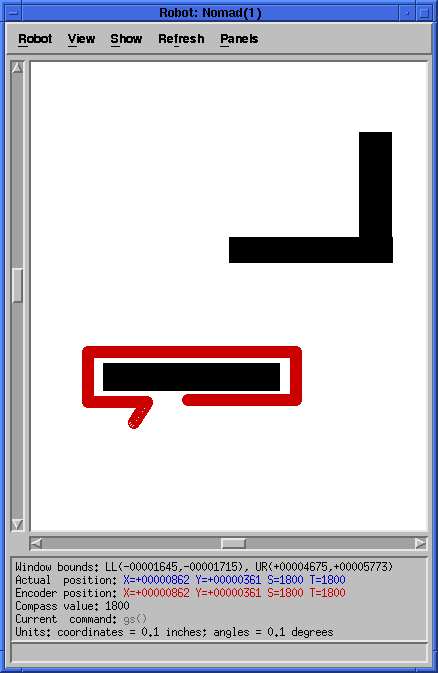
|
|
(2750, 4200)
Picture 2
bugmapA
|
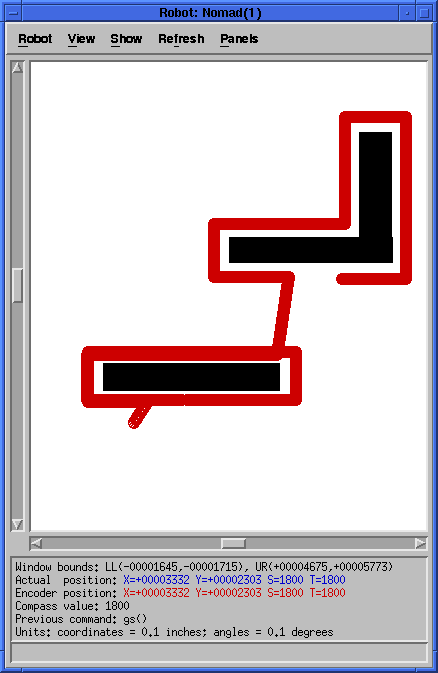
|
|
(2750, 4200)
Picture 3
End
bugmapA
|
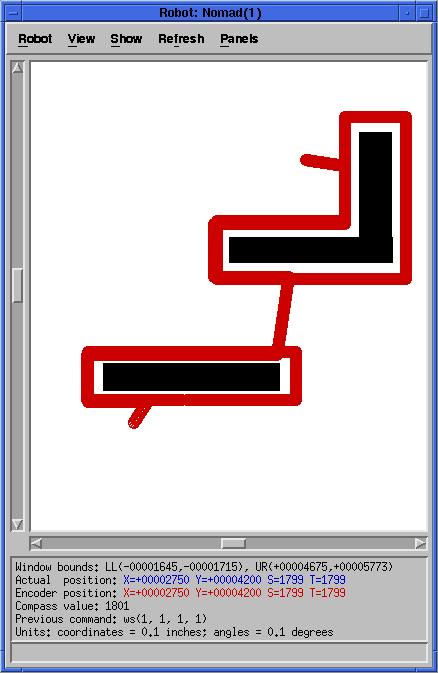
|
|
|
(-1500, 2000)
Hitting to bottom of obstacle from right to left
bugmapA
|
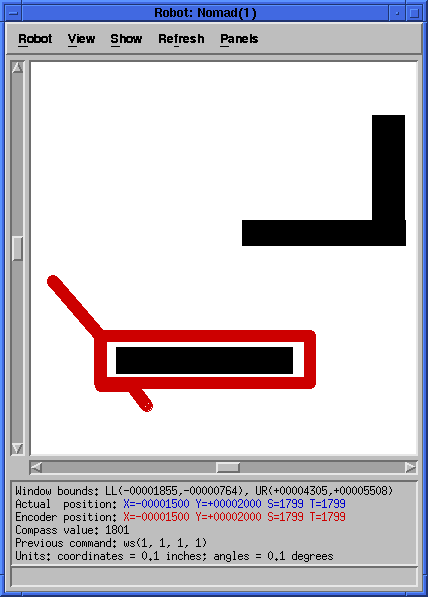
|
|
|
(0, 4700)
Hitting bottom of obstacle with right angle
bugmapA
|
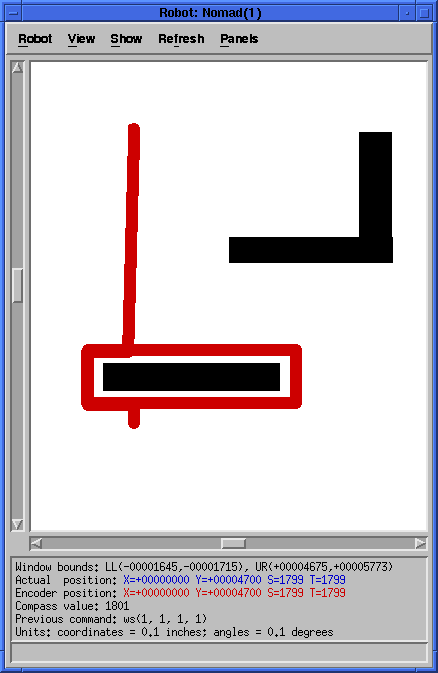
|
|
|
(-1500, 2000)
Hitting to right of obstacle
down to up
|
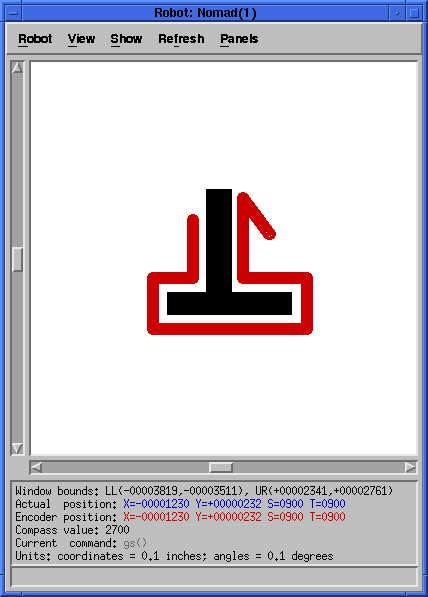
|
|
(-1500, -2000)
Hitting to right of obstacle
up to down
|
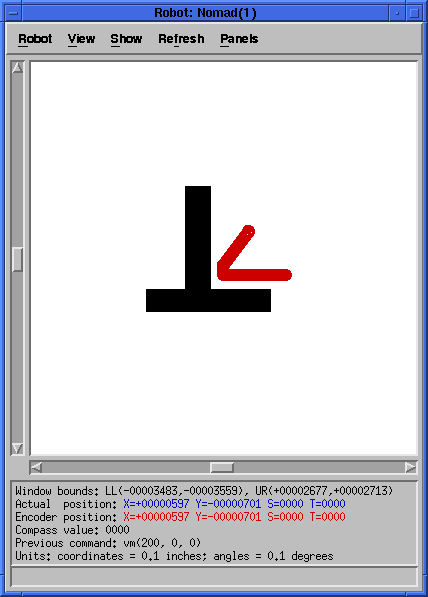
|
|
|
(2750, 4200)
Hitting to left of obstacle
down to up
|
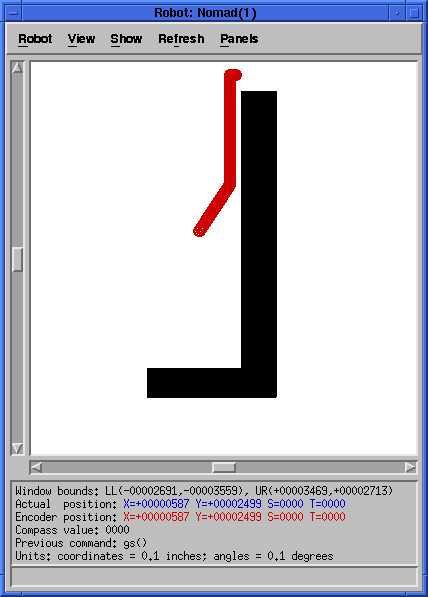
|
|
(1500, -2000)
Hitting to left of obstacle
up to down
|
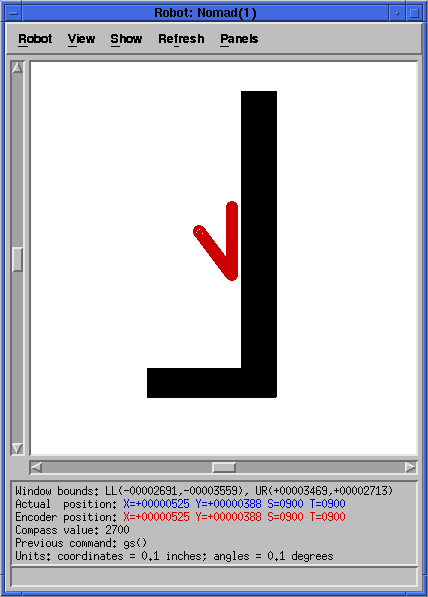
|
|
|
(1500, -2000)
Hitting to top of obstacle
left to right
|
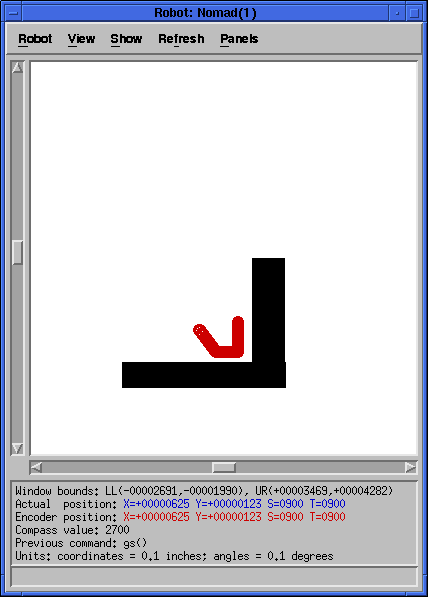
|
|
(-1500, 2000)
Hitting to top of obstacle
right to left
|
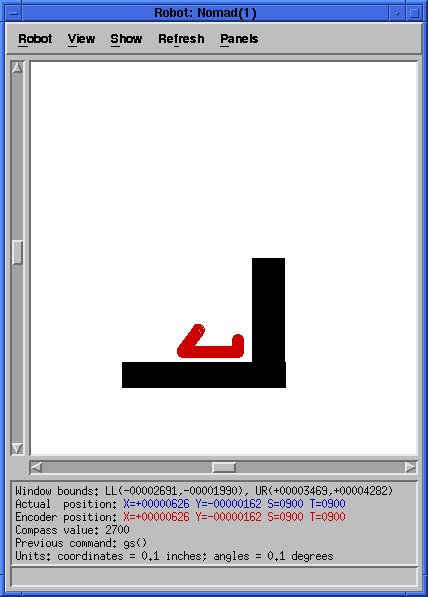
|
|
|
(2750, 4200)
Picture 1
bugmapB
|
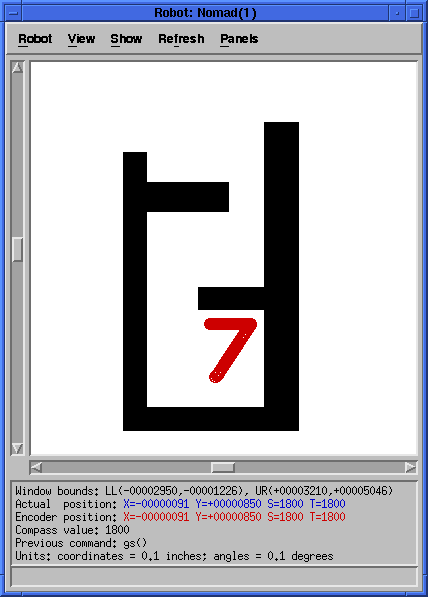
|
|
(2750, 4200)
Picture 2
End
bugmapB
|
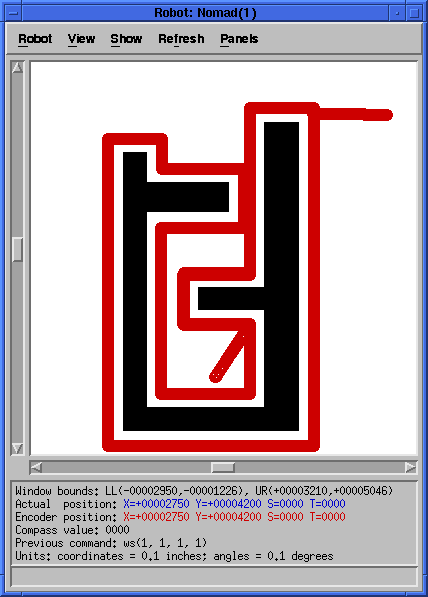
|
|
|
(0, 4700)
Picture 1
bugmapB
|
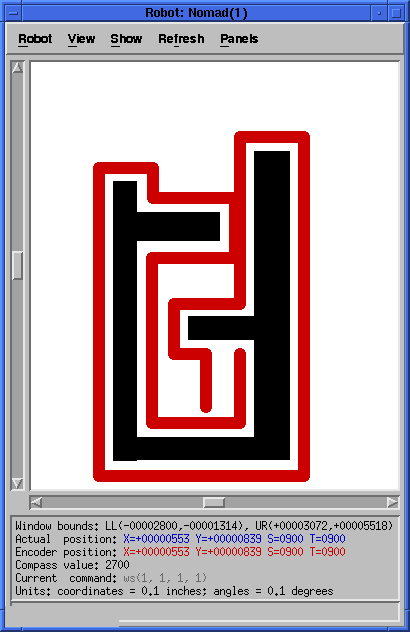
|
|
|
|
(0, 4700)
Picture 1
bugmapB
|

|
|
(0, 4700)
Picture 1
End
bugmapB
|
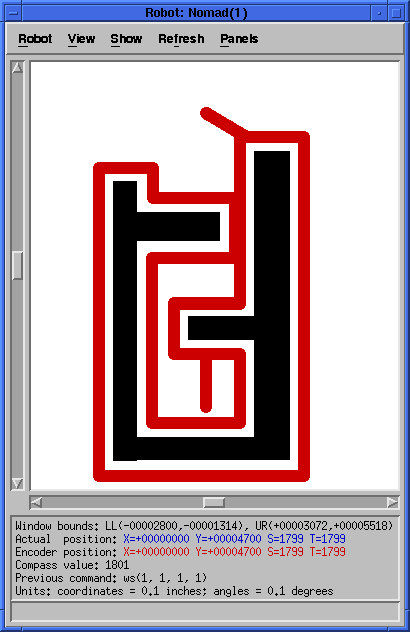
|
|
Bug2
|
End Point (x, y)
|
Picture
|
|
|
(2750, 4200)
bugmapA
|
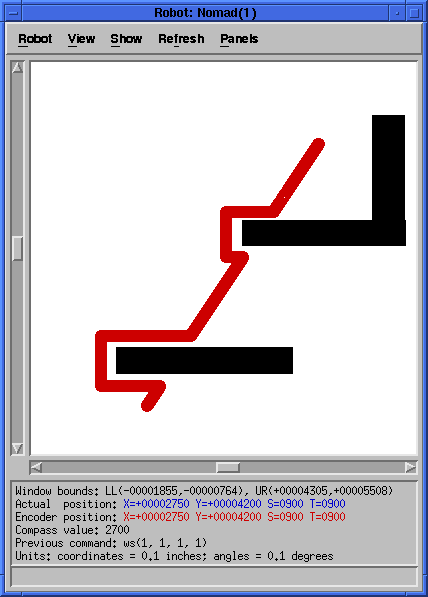
|
|
(-1500, 2000)
bugmapA
|
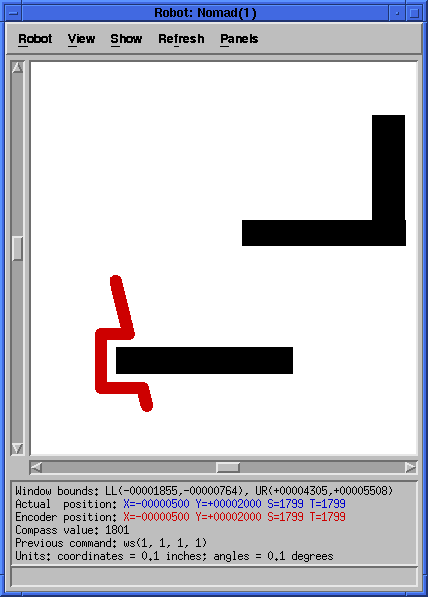
|
|
(0, 4700)
bugmapA
|
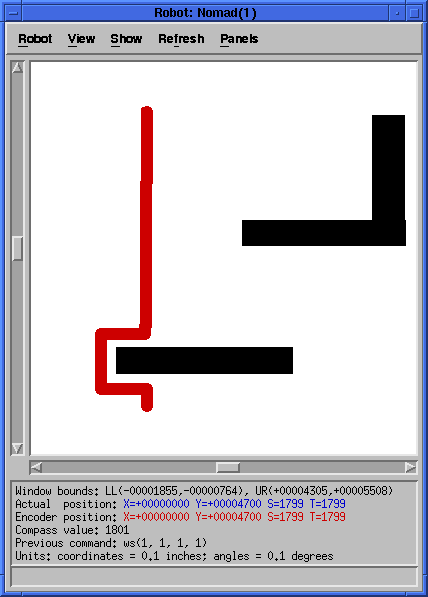
|
|
|
(2750, 4200)
bugmapB
|
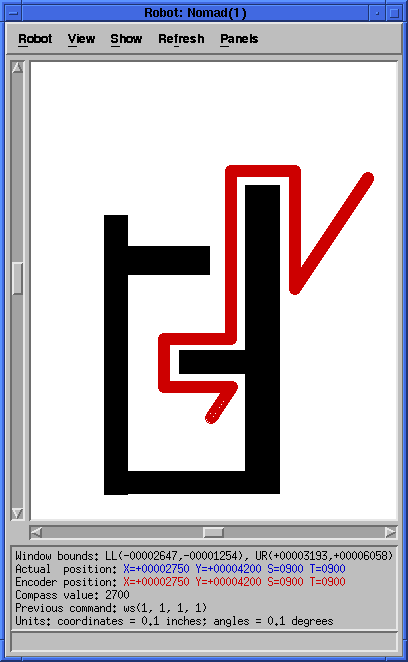
|
|
(0, 4700)
Picture 1
bugmapB
|
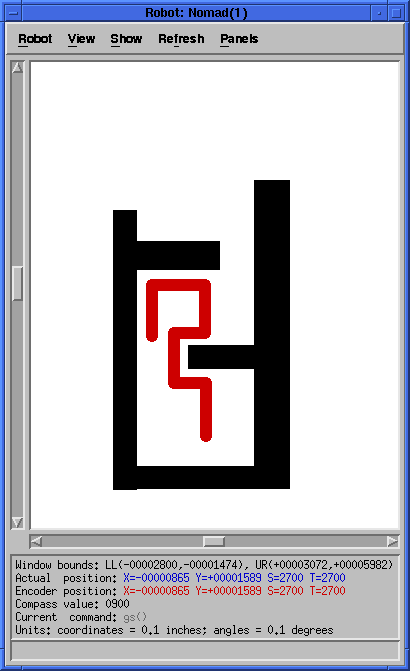
|
|
(0, 4700)
Picture 2 (Final shot)
bugmapB
|
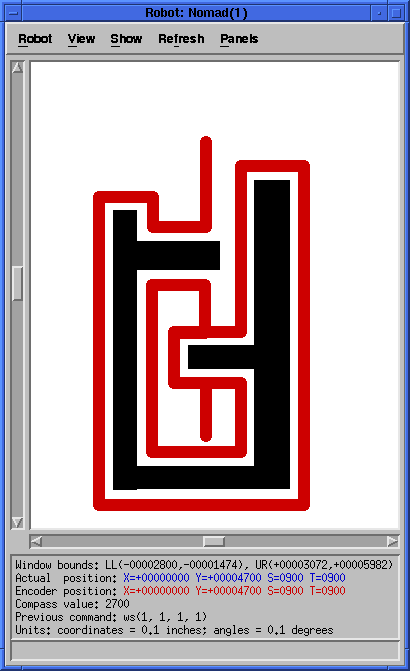
|
|
|
(0, 4700)
bugmapB with opposite
opstacle position
|
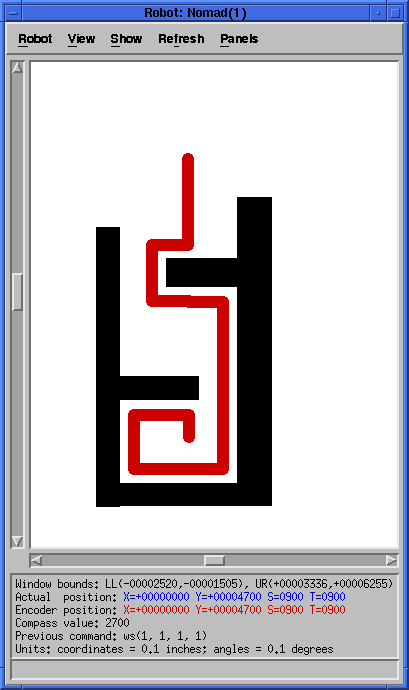
|
|
|
|
|
|
|
|
|
|
Part 2 -- Buttling
This part of the assignment will be made into a third Nomad simulator
assignment... .






















